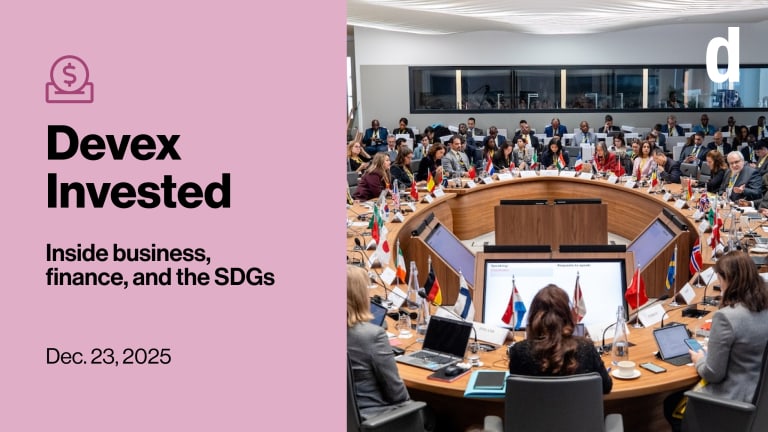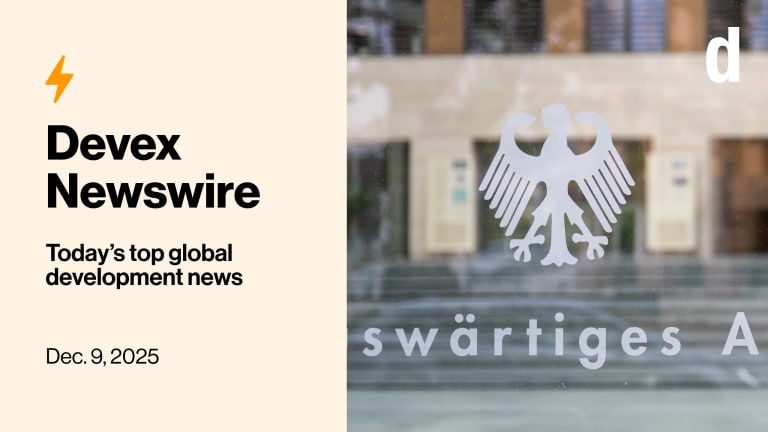
Fresh from the Gulf Cooperation Council meeting in Riyadh last week, representatives from the GCC states, United Nations, European Union, United States, United Kingdom and other humanitarian organizations met to discuss the current situation and outlook in Yemen. At the top of the agenda was the need to assist over 10 million Yemenis affected by the crisis, especially thousands of women and over half a million children suffering from acute malnutrition and starvation as a result of last year’s conflict.
According to the U.N. World Food Program, 5 million Yemenis, or one quarter of the population, are starving as a result of the ongoing humanitarian crisis. The political and social unrest and famine in the region have made it harder for over 470,000 internally displaced persons and African refugees to return home. Earlier this month, the U.N. Food and Agriculture Organization emphasized that soaring food prices are contributing to the “deteriorating” situation. A U.N. delegation deployed to assess the humanitarian and development challenges in Yemen highlighted the provision of food, water, and medical services as the top assistance priorities. Yemen’s woes have spilled over globally with the U.N. appealing for intervention from the international community as fuel prices rise.
Yemen’s political situation is compounded by domestic and tribal disputes, and large parts of the country are not within state control. Conflicts between Houthi rebels in the north and secessionists in the south contribute to the internal strife in the country. Following the violence of last year, the United Nations has made an appeal for the 2012 consolidated Yemen Humanitarian Response. To date, only $87 million, or roughly 20 percent, of the $447 million requested has been funded. Despite Yemen’s standing as the poorest country in the Arab World, official development assistance to Yemen is only $21 per capita, representing less than half the net average official development assistance per capita received by other least developed countries.
Donors have expressed concern over the country’s lack of technical and management expertise in handling large amounts of foreign aid money. A legacy of corruption stemming from former President Ali Abdullah Saleh’s administration also worries foreign aid donors and other international development organizations.
Stepping up aid
In February, amid widespread protests and violence, Saleh stepped down, allowing for a new government to be formed and led by his former Vice President Abdrabuh Mansur Hadi. The peaceful transition of power was carried out through an agreement brokered by the GCC, which granted immunity to Saleh – the country’s ruler for 33 years – in exchange for his formal resignation. The GCC agreement was strongly backed by the United States, other major Western governments and Saudi Arabia. International pressure from the United Nations was also critical in persuading Saleh to sign the agreement.
For many, the change signaled a tentative step toward stability in a country whose uncertain political climate often serves as a safe haven for the al-Qaida in the Arabian Peninsula. The Yemeni-based organization is considered the most dangerous of all al-Qaida affiliates and poses as one of the biggest terrorist threats if left to flourish. In response to the successful establishment of the new government in Yemen, major donors are now open to talks that will enable foreign aid flows to resume.
At a press conference in Riyadh, Saudi Arabia, German Foreign Minister Guido Westerwelle and Saudi Prince Saud Al-Faisal joined forces to assert the importance of stability in Yemen - a move that encouraged the international community to back the country’s development at this critical time.
“Developments in Yemen have shown that the political solution is possible,” the state-run Saba news agency quoted Westerwelle as saying. “Peaceful transition is necessary and it must be understood by other countries.”
During the same trip, Westerwelle announced that Germany has pledged €265 million ($355.22 million) to help rebuild Yemen during the two-year transition period to be led by Hadi. German aid also focuses on delivering basic services for water and sanitation, and education. The German minister also said he will be present at the Friends of Yemen forum for aid donors to be held in Riyadh in May. There, the group of donor nations, including the United States and Gulf and European countries, will meet to plan a cooperative transition that will likely spur security and economic stability in Yemen.
Other donors have also resumed their aid programs in Yemen. The Netherlands, which had previously withheld €14.7 million from its annual €23.7 million spend because of the conflict, recommenced its aid in March. The Dutch ambassador to Yemen, Harry Buikema, also announced an increase in Dutch aid for 2012 with the caveat that donations will be closely monitored and distributed in close consultation with other donors. The World Bank, which also previously suspended aid to Yemen, will resume its annual spend of up to $120 million throughout 2012 and continue providing support in coordinating aid activities in the country.
The United Kingdom also stepped up aid to Yemen, increasing it from 12 million pounds ($33.2 million) in 2007 to 50 million pounds in 2012. In addition to providing 20 million pounds in humanitarian and emergency assistance to Yemen, the U.K. Department for International Development will be harnessing social infrastructure and services such as basic education and health services, especially for children and girls in 2012.
The European Union provided significant humanitarian relief amounting to €25 million in 2011, disbursing €10 million in the second half of the year to support more humanitarian initiatives. For 2012, the European Union allotted €23 million in programmable aid, and, in early March, EU foreign policy chief Catherine Ashton assured Hadi of the bloc’s “firm support” for the administration’s transition initiatives.
Japan also committed support, promising a 2012 grant of $22.6 million for humanitarian relief that will be channeled through U.N. programs in Yemen.
Saudi Arabia’s role
Saudi Arabia has emphasized security and stability as a prerequisite for development spending. Apart from the political unrest, Saudi Arabia is also concerned with the fighting between the Houthis of the north and government forces, as well as the constant terror threat from al-Qaida in the Arabian Peninsula. As the de facto leader of the GCC, Saudi Arabia plays a major role in mediating conflict in and directing donor support to Yemen. The oil-rich Arab nation is also considered to be Yemen’s top foreign aid donor and is expected to increase its assistance in 2012. Although Saudi Arabia does not report its aid spending to the Development Assistance Committee of the Organization for Economic Cooperation and Development – making actual aid flows difficult to measure – the country has been a generous donor to Yemen.
In response to the unexpected flash floods that swept across Yemen’s Hadramout province in October 2008, Saudi Arabia donated $100 million. Aid is also given through the direct purchase of essential commodities for countries in need, as well as monetary assistance for hospitals, sanitation and education. The Carnegie Endowment for International Peace also reports that Saudi Arabia is the only country that provides direct budget support to Yemen and that the country’s total funding for military, development and humanitarian programs stands at approximately $1.5 billion to $2 billion annually.
The United States also played a strong role in brokering a stable government in Yemen and is planning to ramp up its aid to the country this year. During the U.N. Security Council meeting last week, U.S. Secretary of State Hillary Clinton lauded the signed GCC agreement and unveiled a rejuvenated U.S. aid commitment.
“As Yemen continues its multiyear transition, reforms its constitution, convenes a national dialogue, and continues to grapple with its security and humanitarian challenges, we must remain engaged and supportive,” Clinton said.
After suspending Yemeni funding for almost a year due to the unstable security situation, U.S. President Barack Obama’s administration requested $120 million in economic aid for fiscal 2012-2013 – a notable increase from last year’s $107 million request. The Pentagon and State Department have also requested the resumption of military assistance totaling up to $75 million. U.S. economic and military assistance to Yemen has increased over the last few years, although aid to the Arab nation has significantly trailed behind assistance to richer countries in the region such as Israel, Egypt, Jordan and even the Palestinian Territories.
The provision of military and security aid is a strong focus of U.S. aid: In 2010, the Pentagon approved $150 million for military and security assistance to the Yemeni government. However, these plans were shut down after last year’s violent uprising. Some observers believe that the United States and other donors are granting aid to the impoverished country mainly for security reasons, not to provide development assistance.
Antonio Guterres, U.N. high commissioner for refugees, expressed this belief.
“Sometimes I feel a certain frustration with the international community when I see that relations with Yemen are too much focused on security issue, on the question of terrorism – not taking into account the fact that the best way to get the peace and security is to fight poverty, (is) to engage in development, (is) to create jobs, (is) to help a country assert itself in the solution of the problems of its people,” he said.
Important actors from the GCC
Last week, Yemeni officials visited Riyadh to seek the release of $3 billion previously pledged to Yemen in 2006. That year, all major donors came together to show support for the Gulf’s poorest state, promising $5.5 billion for 2007-2010. Of that amount, $3.7 billion was pledged by the Gulf states. Since 2010, only around 58 percent of the total has been released to the Yemeni government.
Other important actors among the Gulf states are the United Arab Emirates and Qatar. Though the OECD-DAC reported that UAE’s commitment was at $134 million in 2009, UAE’s Office for the Coordination of Foreign Affairs said that amount was at $772 million, or 32 percent of its foreign aid spending on projects covering infrastructure, energy, water, transport and education. For 2010, the amount reported by the OCFA on foreign aid to Yemen was 276 million dirhams ($75 million). Qatar is also a significant player in the GCC and is expected by experts to play a constructive role at the Friends of Yemen forum.
Aileen Cruz contributed to this report.
Read more:








